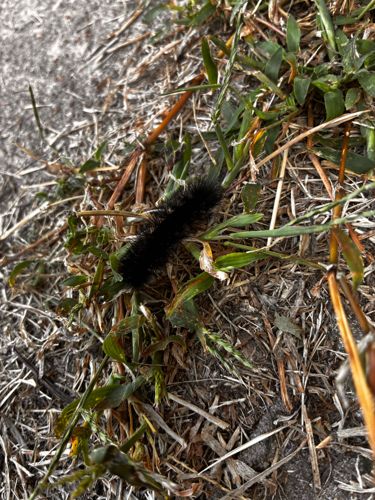Woolly Bear Caterpillar (likely from the Isabella Tiger Moth)
Scientific Name: Pyrrharctia isabella (larva)
Order & Family: Lepidoptera, Erebidae
Size: 1.5 to 2 inches (3.8 - 5.0 cm) in length as a caterpillar.

Natural Habitat
Gardens, fields, woodlands, parks, and disturbed areas across North America, typically found on low-growing vegetation.
Diet & Feeding
Herbivorous. They feed on a wide variety of low-growing plants, including dandelions, asters, grasses, clovers, and other broadleaf weeds.
Behavior Patterns
Woolly bears are known for their distinctive bristly appearance and unique overwintering strategy. They are active during the day and can be seen crawling across paths and lawns in autumn as they search for a sheltered spot to hibernate. They overwinter as caterpillars, freezing solid, and once thawed in spring, they resume feeding, pupate, and emerge as adult Isabella Tiger Moths. The belief that the width of the black band predicts winter severity is a common myth.
Risks & Benefits
Potential Risks: The hairs (setae) of woolly bear caterpillars are generally not irritating to most people, though some individuals with sensitive skin might experience mild irritation or a rash upon direct contact. They are not considered venomous. Benefits: As caterpillars, they are a food source for birds and other predators. As adult moths, they contribute to pollination, though they are not primary pollinators. They are a beloved and harmless insect often associated with folklore around winter weather prediction.
Identified on: 10/2/2025